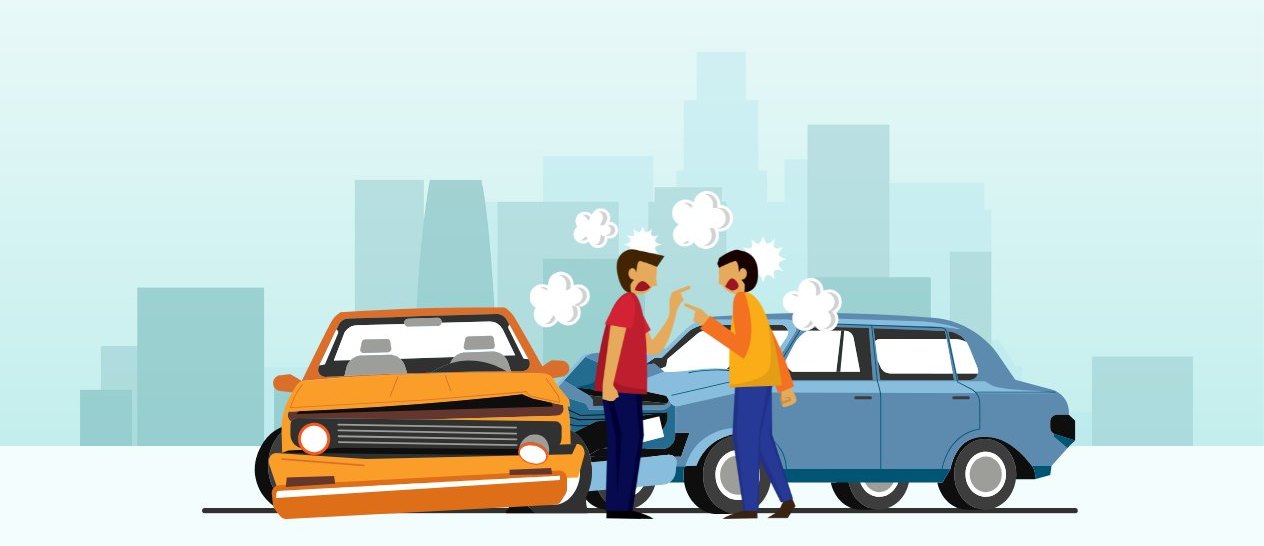What to Do If You’re in an Uber Accident: A Step-by-Step Guide
Ridesharing services like Uber have transformed the way we travel, providing a convenient and cost-effective alternative to traditional taxis. However, accidents involving rideshare vehicles are on the rise, leaving both drivers and passengers unsure of what steps to take when the unexpected happens.
Being in an Uber accident can feel overwhelming. Who is responsible for the damages? How does Uber’s insurance work? What should you do in the immediate aftermath to protect your safety and rights?
This guide provides a clear, step-by-step plan to help you navigate the situation. Whether you’ve experienced minor injuries or significant damages, knowing what to do can make all the difference in ensuring your health, safety, and potential compensation.
What to do after an Uber Car Accident?
Accidents can happen unexpectedly, and it’s essential to act quickly to protect your safety and rights. Staying calm and knowing the right actions to take can make a significant difference in handling the situation effectively. Here are the critical steps to take:
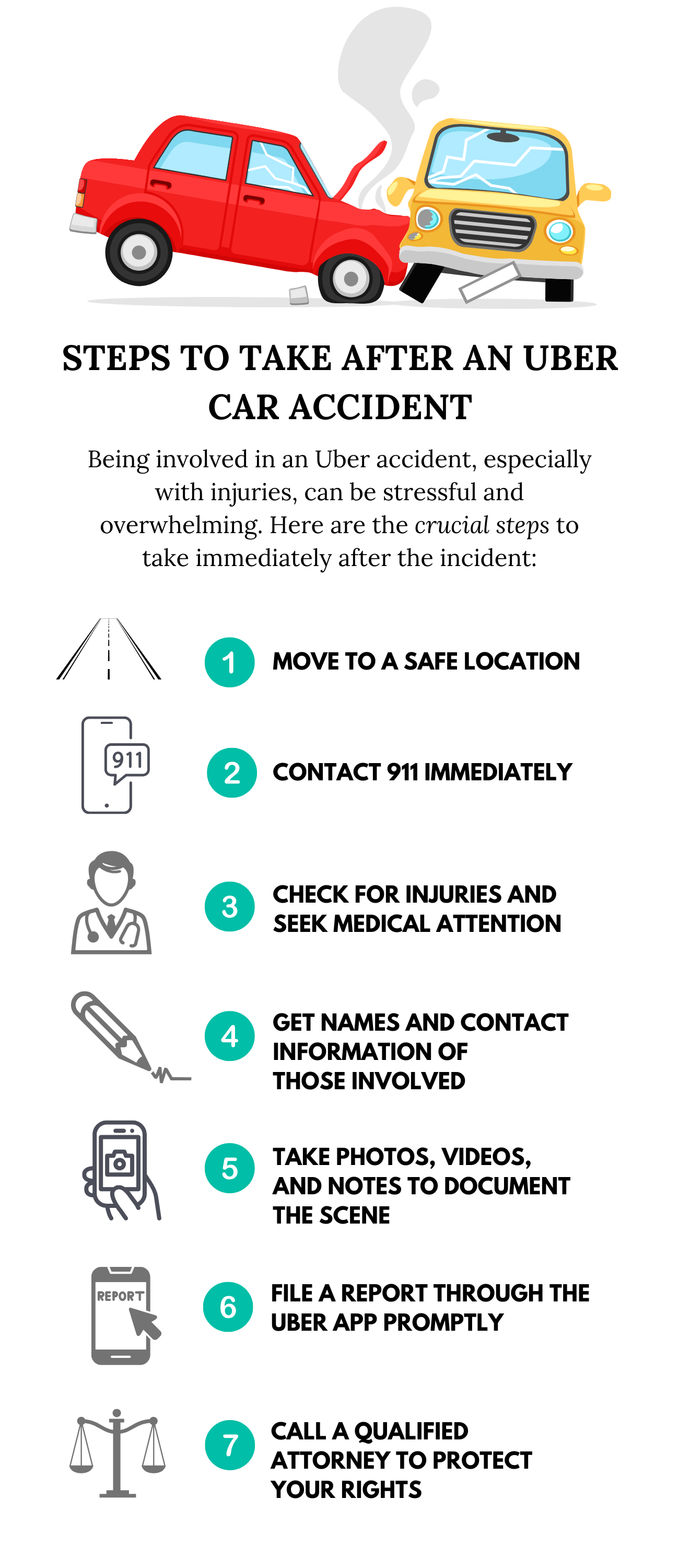
Prioritize Immediate Safety for Everyone
Whether you’re a driver, passenger, or pedestrian, your first priority is to ensure safety. Move away from traffic to a secure spot if possible. Drivers should turn on hazard lights to warn oncoming vehicles, and passengers or pedestrians should stay at a safe distance from the roadway.
Contact Emergency Services Immediately
Call 911 to report the accident and request police and medical assistance. Clearly describe the situation and any visible injuries. For passengers and pedestrians, notify the authorities even if you’re unsure of the full extent of the accident. A police report is critical for documenting the incident.
Check Yourself and Others for Injuries
Assess your physical condition and assist others if it’s safe to do so. Even if you feel unharmed, latent injuries like whiplash or internal bruising may appear later. Both drivers and passengers should seek immediate medical attention to address potential injuries, even minor ones.
Exchange Information with Those Involved
Drivers should share names, phone numbers, insurance details, and vehicle registration with each other. Passengers and pedestrians should provide their contact information to the authorities for the report but avoid speculating about who is at fault.
Record All Relevant Evidence
For drivers, passengers, or pedestrians, use your phone to take clear photos of the accident scene. Include vehicle damage, road conditions, traffic signs, injuries, and anything else relevant. If you’re a pedestrian or bystander, note key details like the time, location, and weather conditions.
File an Accident Report with Uber
Use the Uber app to report the crash and follow their instructions for completing an incident report. Uber’s platform provides specific guidance for passengers and drivers in the event of an accident, ensuring all necessary information is recorded for insurance and safety purposes. Prompt reporting also helps expedite the resolution process and may support your claims if disputes arise.
Notify Your Insurance Provider
Regardless of your role in the accident, contact your insurance company promptly. For passengers, check if the rideshare platform’s insurance applies to your situation. Pedestrians or other third parties should provide their own insurance provider with any relevant documentation.
Consult a Lawyer to Understand Your Rights
Uber accidents often involve complex liability issues, especially for passengers and pedestrians. Speaking with a lawyer can help clarify who is responsible, navigate insurance policies, and secure fair compensation for your injuries or damages.
Common Causes of Uber Accidents
Uber accidents can result from various factors, but certain causes stand out as the most frequent in rideshare-related crashes. By identifying these patterns, drivers, passengers, and other road users can better understand the risks and take steps to minimize them.
●
Third-Party Negligence is a leading cause of Uber accidents. Many incidents occur when other motorists fail to drive responsibly, such as speeding, reckless lane changes, or driving under the influence. These actions put Uber drivers and their passengers at risk, even when the rideshare driver is following all safety protocols.
Other common causes include:
●
Distracted Driving: Rideshare drivers often rely on GPS navigation and the Uber app to manage trips, which can divert their attention from the road.
●
Driver Fatigue: Long hours and multiple consecutive rides can lead to exhaustion, reducing reaction times and decision-making abilities.
●
Traffic Violations: Speeding, running red lights, and failing to yield are common issues, especially for drivers under time pressure to complete rides.
●
Inexperienced or Unfamiliar Drivers: Some Uber drivers may be unfamiliar with local roads or lack extensive driving experience, increasing the likelihood of errors.
●
Poor Vehicle Maintenance: While Uber requires vehicles to meet specific standards, a lack of regular maintenance by the driver can lead to brake failures, tire blowouts, and other hazards.
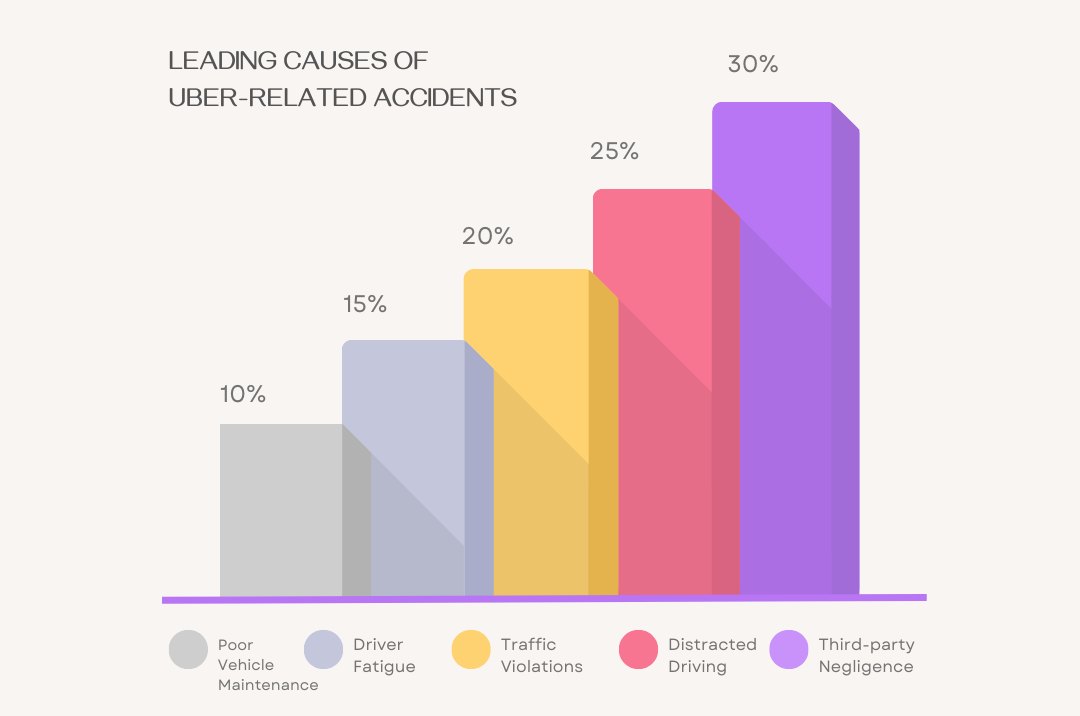
The infographic above highlights the most common risk factors contributing to Uber-related accidents. It serves as a valuable guide for understanding how these causes impact rideshare safety.
By showcasing these trends, the infographic emphasizes the importance of awareness and proactive measures for everyone involved in rideshare services—drivers, passengers, and third parties alike. These insights underscore the critical need for caution on the road and informed decision-making to promote safety.
How Does Insurance Work in Uber Accidents?
Understanding how insurance applies in an Uber accident can be complex, as coverage depends on the driver’s status at the time of the crash. Uber’s insurance policy is divided into three distinct periods: each period outlines specific levels of coverage, varying risks, and determines who is responsible for damages or medical expenses.
Below, we break down these periods to clarify how coverage works in each scenario:
[Period 1] When the app is off: No coverage is provided by Uber, and the driver’s personal insurance is responsible for any damages or injuries.

[Period 2] When the app is on but no ride is accepted: Limited coverage applies, offering basic protection for property damage and injuries caused to others.

[Period 3] When a ride is accepted or the passenger is in the vehicle: Uber’s $1 million liability policy offers the highest level of protection, covering passengers, other drivers, and pedestrians.

Uber’s uninsured/underinsured motorist (UM/UIM) coverage also plays a vital role in hit-and-run accidents. If a driver flees the scene and cannot be identified, this policy can cover medical bills and other damages for both passengers and drivers during Period 2 or Period 3.
This breakdown is critical for understanding the level of protection available to passengers, pedestrians, and other drivers during an accident. Knowing where you fall within these periods can help you navigate liability and insurance claims with clarity.
Uber Accident Statistics in the U.S.
As one of the most widely used rideshare services, Uber has become a key player in transforming urban transportation. While the platform has undoubtedly brought convenience to millions, it also faces challenges in maintaining safety on such a massive scale. Even a small percentage of accidents can result in significant impacts, both for those involved and for public perception. Below are some critical statistics that shed light on the safety record and risks associated with Uber rides:
- ●
Fatal Crashes: Uber’s latest safety report (2021-2022) recorded 91 fatal crashes involving its vehicles, resulting in 101 fatalities. These incidents impacted riders, drivers, and third parties, including pedestrians and cyclists. Despite these numbers, Uber maintains that its platform is statistically safer than average. These crashes often highlight the inherent dangers of road travel, underscoring the importance of continued safety initiatives. - ●
Fatality Rate: With a reported fatality rate of 0.57 per 100 million vehicle miles traveled (VMT), Uber boasts a significantly lower rate compared to the national average of 1.13 fatalities per 100 million VMT. This statistic reflects the relative safety of rideshare services but does not diminish the devastating impact each incident has on the individuals and families involved. - ●
Incidents and Risks: Uber reports that 99.9% of trips occur without any safety-related incidents. However, the remaining 0.1% translates into thousands of accidents annually due to the sheer volume of rides provided worldwide. These incidents range from minor fender benders to severe crashes. - ●
Impact on Traffic Fatalities: A study from the University of Chicago suggested that the rise of rideshare services like Uber contributed to a 3% increase in traffic fatalities. While these services reduce drunk driving rates, their presence increases overall road exposure, especially in congested urban areas. - ●
Urban Accidents: Approximately 90% of fatal rideshare-related crashes occur in urban areas where rideshare usage is highest. These statistics emphasize the need for stricter safety protocols and awareness among both drivers and passengers.
These statistics provide crucial insights into the complexities of rideshare-related accidents. While services like Uber have revolutionized transportation, the risks they pose cannot be overlooked. For drivers and passengers alike, understanding these trends is vital to ensuring safety and navigating liability issues effectively.
What Are Your Rights as an Uber Passenger?
🛡️ Know Your Rights!
As a passenger, you have specific rights to protect your safety and ensure fair treatment if you’re involved in an accident. These rights are in place to safeguard your well-being and help you navigate what can often be a confusing and stressful situation. Understanding these rights empowers you to take the necessary steps to address any issues, seek proper assistance, and ensure that your safety and concerns are prioritized during and after your rideshare experience.
The Right to Safe Transportation
Uber drivers are required to meet strict standards to ensure passenger safety. This includes routine vehicle inspections, compliance with local traffic laws, and maintaining valid insurance. If you ever feel your safety is compromised during a ride, you have the right to report the issue directly to Uber through their app.
The Right to Compensation
If you’re injured in an Uber accident, you have the right to seek compensation for your damages. Depending on the circumstances, this may involve filing a claim with Uber’s insurance policy, the driver’s personal insurance, or the at-fault third party’s insurance. Compensation can include medical expenses, lost wages, and other related costs.
The Right to Information
As a passenger, you’re entitled to access critical information about the accident. This can include the driver’s insurance details, a copy of the police report, and any relevant documentation from Uber. This information is essential for filing claims or resolving disputes.
The Right to Report the Incident
If you’re involved in an accident or experience a safety issue, you have the right to report it to Uber. Using the app’s support features, you can provide details about the incident, and Uber is obligated to investigate and address your concerns.
The Right to Seek Legal Help
In situations where fault is disputed, or compensation is delayed, you have the right to consult with an attorney. Legal professionals experienced in rideshare cases can help ensure you’re treated fairly and receive the compensation you deserve.
What Should I Do if the Uber Driver Was at Fault?
🚦 Stay Informed!
Determining fault in an Uber accident can significantly affect how claims are handled. If the Uber driver is at fault, your next steps depend on whether the fault is admitted or disputed.
Scenario 1: Driver Admits Fault
If the Uber driver acknowledges responsibility for the accident, the process is generally more straightforward:
- ●
File a Claim with Uber: Submit details of the accident, such as the police report and photos, through Uber’s insurance system. Their $1 million liability policy typically covers damages. - ●
Collect Evidence: Even if the fault is admitted, gathering photos of the accident scene, vehicle damage, and a copy of the police report strengthens your claim.
Scenario 2: Fault Is Disputed
If the Uber driver disputes responsibility, the process may become more complex:
- ●
Gather Additional Evidence: Collect witness statements, traffic camera footage, or any supporting documents to establish fault. - ●
Contact a Lawyer: If liability remains unclear or your claim is denied, consulting a lawyer experienced in Uber accidents can help protect your rights.
If you believe the Uber driver was at fault in an accident, it’s essential to act promptly. Documenting the incident thoroughly and understanding your rights can make a significant difference in the outcome of your claim. Whether the driver admits fault or disputes it, taking proactive steps—such as gathering evidence, filing claims, and consulting with a lawyer—will ensure you’re protected and on the path to fair compensation.
What Happens If an Uber Driver Hits a Pedestrian?
Accidents involving pedestrians are serious and often raise complex liability and insurance issues. Let’s explore a hypothetical scenario to better understand how these situations are handled.
John, a pedestrian, is walking across a marked crosswalk when an Uber driver, distracted by a notification on their app, accidentally strikes him. John sustains minor injuries and damages his personal belongings.
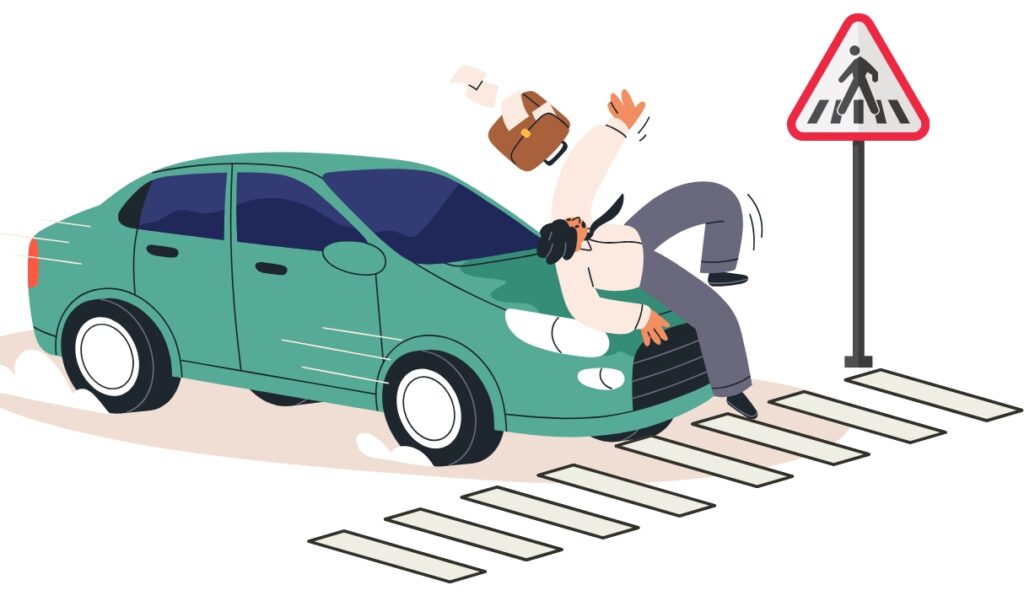
What Happens Next?
- ●
Insurance Coverage: The Uber driver was transporting a passenger at the time of the accident (Period 3). Uber’s $1 million liability policy will cover John’s medical expenses and property damage. - ●
Legal Process: John files a claim with Uber’s insurance provider, using evidence like the police report and eyewitness statements to establish fault. - ●
Challenges: If the Uber driver disputes fault, John may need to involve a lawyer to ensure fair compensation.
Michael, an Uber driver, finishes his shift and logs out of the app. While driving home, he strikes a pedestrian crossing a road.
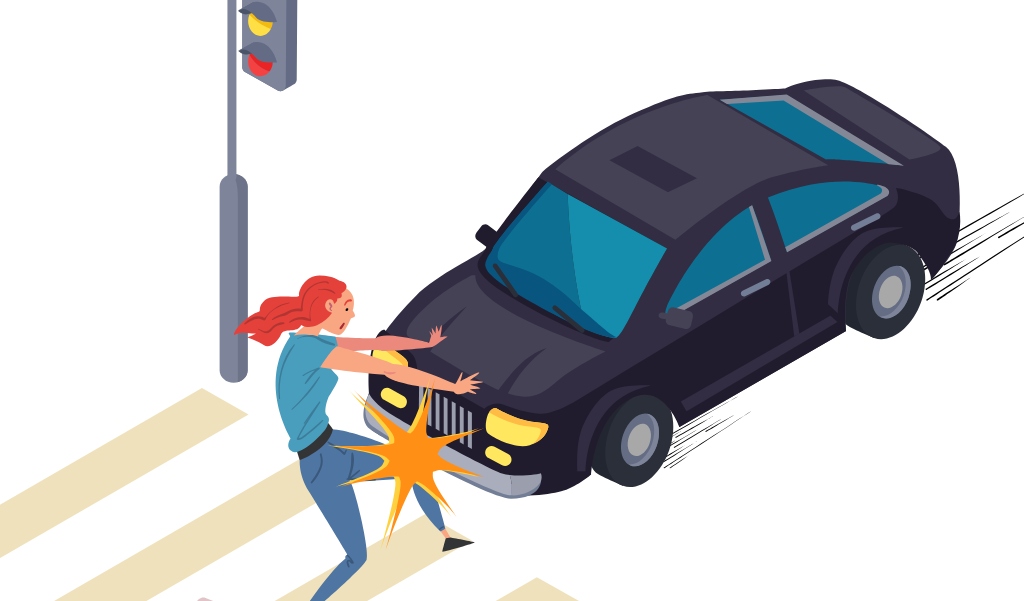
What Happens Next?
- ●
Insurance Coverage: Since Michael is off duty and the app is not active (Period 0), Uber’s insurance does not apply. The pedestrian must file a claim against Michael’s personal auto insurance.
Challenges for the Pedestrian:
- ●
If Michael has insufficient insurance coverage, the pedestrian may face difficulty recovering full compensation. - ●
If the pedestrian has uninsured/underinsured motorist coverage, they may need to file through their own insurance provider.
Key Takeaways
- ●
Uber’s insurance coverage varies based on the driver’s status at the time of the accident. - ●
Pedestrians may face challenges when drivers are off duty or underinsured. - ●
Legal assistance may be necessary to secure fair compensation in disputed cases.
How to File a Claim After an Uber Accident?
Filing a claim after an Uber accident can seem overwhelming, but breaking it down into clear steps makes the process more manageable. Here’s a step-by-step guide to ensure your claim is filed correctly and efficiently:
Step 1: Report the Accident Using the Uber App
Open the Uber app and report the accident immediately. Include key details such as the time, location, and any injuries or damages involved. Uber’s support team will guide you on next steps, including how to access their insurance policy if applicable.
Step 2: Document the Scene
Gather as much evidence as possible to support your claim. This includes photos of the vehicle damage, surrounding area, and any injuries; contact information for witnesses; and a copy of the police report, which is essential for filing a claim with Uber’s insurance provider.
Step 3: Contact Uber’s Insurance Provider
Uber’s insurance is managed through third-party providers, depending on your location. You’ll need to provide the police report, photos or other documentation of damages and injuries, and any medical records if injuries were sustained.
Step 4: File the Claim
Submit all required documents through the insurance provider’s claims portal or as instructed by Uber. Be thorough and ensure no key details are missing, as incomplete claims may result in delays.
Tips for a Successful Claim
- ●
Be Prompt: Report the accident and file your claim as soon as possible to avoid delays. - ●
Stay Organized: Keep copies of all documentation, including correspondence with Uber and their insurance provider. - ●
Be Persistent: Follow up regularly to ensure your claim is being processed.
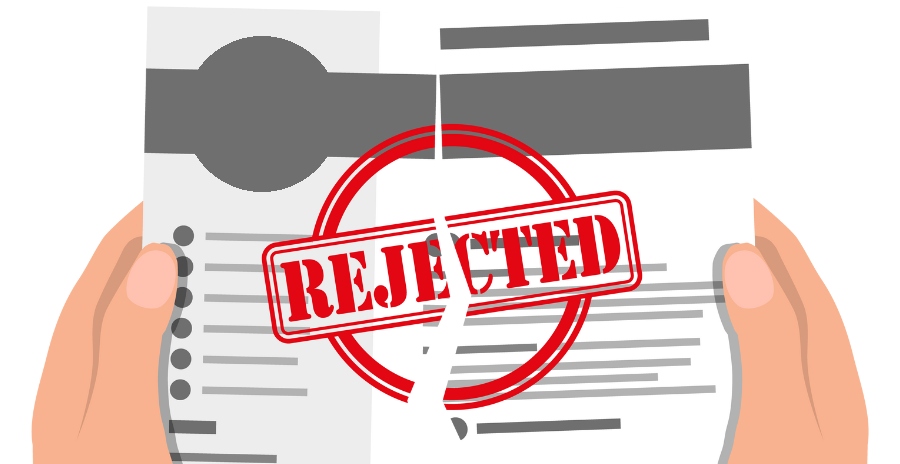
What If Uber’s Insurance Denies My Claim?
A denied claim can feel frustrating and unfair, but it’s not the end of the road. Understanding the reasons for denial and knowing how to respond can help you secure the compensation you deserve. Below are some common reasons for claim denials and solutions to address them.
Lack of Coverage
The Problem: Uber’s insurance may deny your claim if the accident occurred during a period when their coverage does not apply, such as when the driver was offline or between rides.
The Solution: Strengthen your case by providing additional evidence such as: photos of the accident scene, a copy of the police report, and medical records or bills related to your injuries.
Insufficient Evidence
The Problem: Claims often get denied due to lack of evidence proving the driver’s fault or the extent of damages and injuries.
The Solution: Gather compelling evidence such as: eyewitness testimonies, traffic camera footage, and accurate documentation of financial losses like medical bills and repair costs.
Disputed Liability
The Problem: If there is disagreement over who is at fault, claims can be delayed or denied while the liability is investigated.
The Solution: Work with a lawyer and gather additional evidence such as: expert accident reconstruction analysis, detailed witness statements, and any prior complaints or violations involving the driver.
Policy Exclusions
The Problem: Certain situations may not be covered by Uber’s insurance policy, such as unauthorized use of the app or illegal activities during the ride.
The Solution: Check the policy for exclusions and prepare alternative options such as: filing with the driver’s personal insurance, exploring uninsured/underinsured motorist coverage if applicable, or seeking legal advice for contested cases.
Steps to Take If Your Claim Is Denied
- ●
Request a Detailed Explanation: Contact the insurance provider and ask for a written explanation of why the claim was denied. - ●
Appeal the Denial: If you believe the denial was unjust, file an appeal. Provide any additional evidence or documentation that strengthens your case. - ●
Involve Uber’s Support Team: Use the Uber app to escalate the issue and request further assistance. Uber may re-evaluate your case if the denial appears inconsistent with their policies. - ●
Seek Legal Help: If appeals and escalations fail, consider consulting a rideshare accident lawyer. They can negotiate with the insurance provider or represent you in arbitration or court.
What Is The Average Uber Accident Settlement?
Estimating an average settlement amount for Uber accident cases can be challenging because no two cases are alike. Settlement amounts depend on the severity of injuries, property damage, and other factors, with amounts ranging widely. While some cases result in modest compensation, others involving serious injuries can reach impressive figures.
- ●
Soft tissue injuries like whiplash or sprains often result in settlements between $10,000 and $50,000, providing victims with compensation for minor medical expenses and discomfort. - ●
Serious injuries such as traumatic brain injuries, spinal cord damage, or multiple fractures can lead to payouts exceeding $100,000 or even millions, depending on the long-term impact on the victim’s quality of life. - ●
Cases that escalate to court often yield higher compensation. Courts may consider factors like emotional distress, pain and suffering, or punitive damages to hold negligent parties accountable.
Key Factors That Influence Uber Accident Settlements
- ●
Physical Injuries: Severe injuries, such as broken bones, concussions, or organ damage, often result in higher settlements due to extensive medical bills and prolonged recovery periods. - ●
Emotional Impact: Emotional and psychological distress, such as PTSD, anxiety, or depression, can significantly increase settlement amounts as they reflect the hidden toll of the accident.
The cost of immediate medical treatments, surgeries, rehabilitation, and future care are pivotal in determining settlement values. For cases involving chronic pain or long-term disability, settlements must reflect the lifetime cost of care.
Accidents often cause victims to miss work, reducing their income during recovery. If injuries result in permanent disabilities that limit job opportunities, settlements often include compensation for diminished earning capacity.
The driver’s status—off-duty, waiting for a ride request, or actively transporting a passenger—plays a critical role in determining insurance coverage. Settlements vary depending on whether Uber’s policy applies or if only the driver’s personal insurance is in effect.
Takeaway
Understanding the factors that influence Uber accident settlements is essential for setting realistic expectations. The severity of injuries, the quality of evidence, and clear liability all play a significant role in securing fair compensation. Being informed and prepared can make the difference between an average and an exceptional settlement.
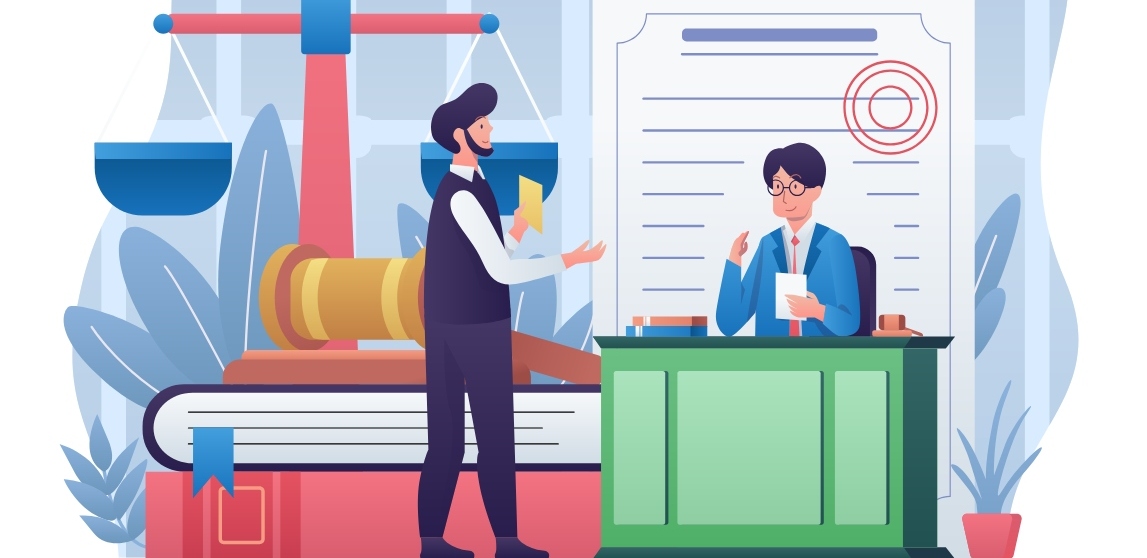
Why You Need a Lawyer After an Uber Accident
Uber accidents can be legally complex, involving multiple parties, insurance policies, and liability disputes. While not every situation requires legal representation, there are key scenarios where hiring a lawyer is essential to protecting your rights and ensuring fair compensation. If you’re facing any of these challenges, the Best Uber Accident Lawyers can provide the guidance and expertise you need to protect your rights and secure fair compensation.
Assessing Liability and Coverage
Determining who is at fault in an Uber accident can be challenging, especially when multiple drivers or third parties are involved. A lawyer helps navigate these complexities by:
- ●
Investigating the accident to establish fault. - ●
Identifying which insurance policies apply (Uber’s, the driver’s, or a third party’s). - ●
Ensuring liability is distributed fairly if shared fault is a factor.
Handling Insurance Claims
Filing a claim with Uber’s insurance provider or a third-party insurer can be daunting. Insurance companies often aim to minimize payouts, which is where a lawyer steps in to:
- ●
Negotiate with the insurance adjusters on your behalf. - ●
Review and ensure all documentation is accurate and complete. - ●
Appeal denied claims or push back on lowball settlement offers.
Calculating Compensation
Accurately valuing your claim requires a full understanding of current and future losses. A lawyer can:
- ●
Calculate damages for medical expenses, lost wages, and pain and suffering. - ●
Include compensation for long-term impacts, such as reduced earning potential or ongoing medical care.
Representing You in Arbitration or Court
If the claim cannot be resolved through negotiation, you may need to pursue legal action. A lawyer will:
- ●
Prepare your case for arbitration or trial. - ●
Represent you in proceedings to ensure your voice is heard. - ●
Advocate for maximum compensation, particularly in cases involving severe injuries or disputed liability.
Conclusion
Uber accidents can be stressful and confusing, whether you’re a passenger, driver, or pedestrian. Understanding what to do after an accident, how insurance works, and your legal rights is crucial for navigating these situations effectively. From filing a claim to seeking compensation for injuries, being informed about your options can make all the difference.
If you’ve been involved in an Uber accident, don’t hesitate to take the necessary steps to protect yourself. Document the scene, file a claim promptly, and seek legal advice if you encounter challenges with insurance or liability disputes. Your safety and fair compensation should always be the top priority.
Stay informed, stay safe, and know your rights. Whether you’re a frequent Uber rider or an occasional passenger, being prepared ensures peace of mind and protection in any situation.
